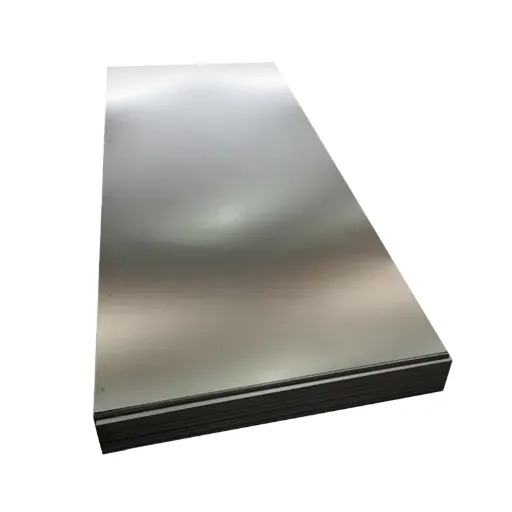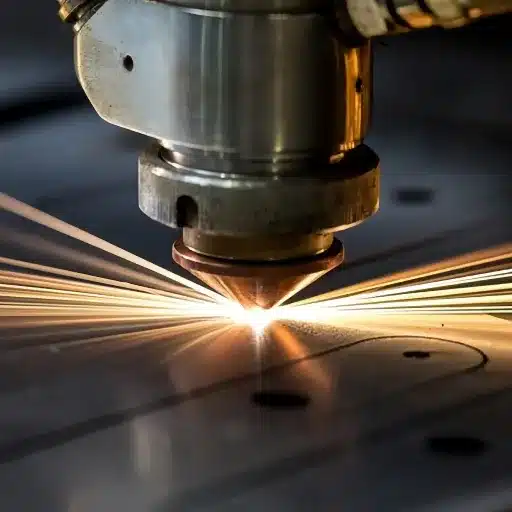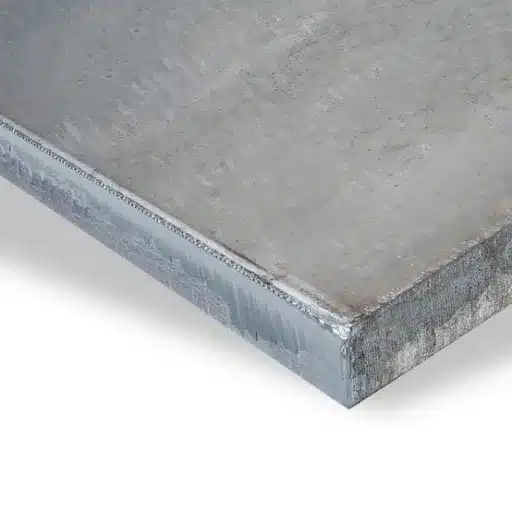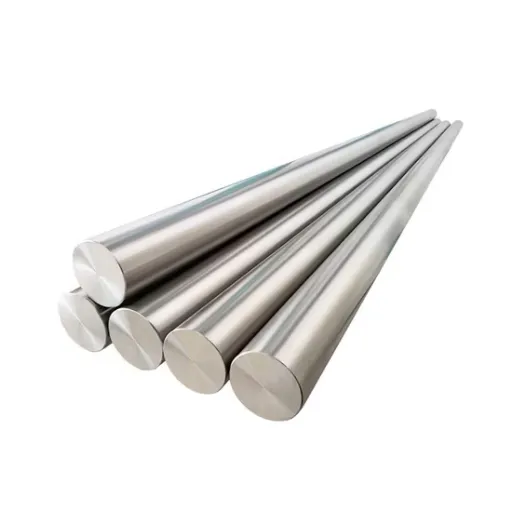In modern construction, fabrication, and industrial applications, material selection is a crucial factor determining a given project’s final success and longevity. In the myriad options, the DX52D galvanized steel coil remains the most versatile and trusted material due to its special attributes and reliability. But what exactly makes the DX52D galvanized steel coil special? How does it compare to other materials, and why are many industry professionals choosing it over others?
Hence this comprehensive guide will take you on an expansive journey through the world of the DX52D galvanized steel coil—their unique characteristics, benefits, and in-depth applications. This article promises to be full of helpful information for an experienced hand or a beginner weighing options. So please stay on as we look at every little detail of this excellent material.
What is a DX52D Galvanized Steel Coil?
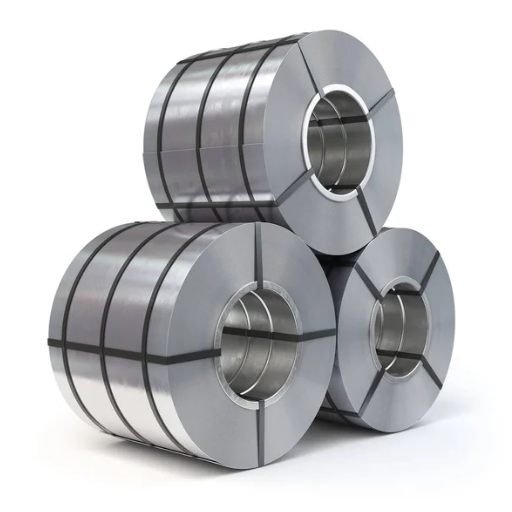
A DX52D galvanized steel coil is a modified steel coated with a layer of zinc to protect it against rust and corrosion. The coating symbolizes a particular category of cold-rolled low-carbon steel intended primarily for forming applications. These coils are found to be used heavily in industries requiring hardy yet formable and corrosion-resistant materials, including automotive, civil engineering, and home appliances. The zinc sharing now acts as a rust-proof wall that guarantees longevity and dependable operation in diverse atmospheric conditions.
Characteristics of DX52D Steel
The peculiar mixture of strength, formability, and corrosion resistance makes it a very versatile option for numerous industrial applications. Some of the essential properties of DX52D steel are elucidated below:
- Chemical Composition
The steel mainly contains very low carbon content that is the reason for better formability. The usual chemical composition is:
- Carbon (C): ≤ 0.12%
- Manganese (Mn): ≤ 0.60%
- Phosphorus (P): ≤ 0.10%
- Sulfur (S): ≤ 0.045%
- Mechanical Properties
- Yield strength: 140-300 MPa
- Tensile strength: 270-500 MPa
- Minimum elongation (A80): ≥22%
These ensure that DX52D steel can sustain a high load without either deformation or loss of integrity during the forming operation.
- Zinc Coating
Zinc coating bestows exceptional corrosion resistance. Zinc coating is usually referred to in classes from Z100 (zinc coating of 100 g/m2 minimum) to Z600 (600 g/m2 minimum) according to the extent of corrosion protection required by the application.
- Formability
Being low-carbon, steel has excellent ductility, which allows it to be formed into complex shapes without cracking. This is good for allowing pressing, bending, and deep drawing.
- Surface Quality
Available in many finishes, such as normal spangle or minimized spangle, this steel is attractive for aesthetic needs while being practical for further processing performance, such as painting or coating.
- Applications
- Automotive Industry: Strength and formability are required for body panels and structural components.
- Construction: For roofs, wall claddings, and framing, all of which demand durability and weather resistance.
- Appliances: For household appliances in which looks and wear resistance are both well appreciated.
With its desired features and infinite varietal applications, DX52D steel has become one of the basic indispensable materials on the world stage, especially in fields that require a high-grade and durable material.
Benefits of Using Galvanized Steel Coil
| Key Benefit | Description |
|---|---|
| Corrosion Resistance | Zinc coating prevents rust and corrosion. |
| Longevity | Durable material with extended lifespan. |
| Strength and Integrity | Withstands mechanical stress and heavy loads. |
| Aesthetic Appeal | Smooth, shiny surface enhances visual appeal. |
| Environmental Sustainability | Reduces waste with long-lasting performance. |
| Low Maintenance | Minimal upkeep required over time. |
| Cost-Effectiveness | Saves on maintenance and replacement costs. |
| Versatility | Suitable for diverse applications and industries. |
Applications of DX52D Galvanized Steel
Being so versatile makes it usable in a large number of manufacturing sectors. However, below we list five areas where it is often used in industry:
- Automotive industry
- Car body panels, chassis, and underbody components are manufactured with corrosion resistance and formability.
- Also aids in lightweight construction, which in turn assists fuel economy and emission control.
- Construction and Building
- It could withstand harsh environmental conditions in roofing panels, gutters, wall cladding, and structural frames.
- Opted for infrastructure developments requiring durability for a long time due to its weather resistance and strength.
- Home Appliances
- Interaction of functional performance and aesthetic appeal in household goods, such as washing machines, refrigerators, and HVAC systems.
- Offers durable life and visual appeal to the surface.
- Electrical and Electronics Sector
- Galvanized steel is used to enclose, casing, and bracket electrical equipment due to its conductivity and protection against wear through the zinc coating.
- Helps in reducing the maintenance of sensitive electrical components.
- Agricultural Machinery
- Construction of silos, storage tanks, and farming machinery provides an alternative against moisture and rain.
- Ensures durability in harsh agricultural environments and thus cuts costs in the long run.
How is DX52D Galvanized Steel Coil Manufactured?

The production of DX52D Galvanized Steel Coil has many steps that must be carried out to keep its integrity and performance:
- Base Steel Preparation
For starters, cleaning is imperative to eliminate contaminants such as dust, oil, and rust when the base steel sheet is still in its crude form.
- Annealing
The steel is heated in a controlled environment to achieve desirable mechanical properties such as flexibility and strength.
- Hot-Dip Galvanizing
The cleaned and annealed steel is dipped in molten zinc to impart a protective zinc coating on the surface of the steel.If properly applied, the zinc coating provides excellent corrosion protection.
- Cooling and Finishing
After galvanization, the steel is rapidly cooled and rolled into coils. Surface treatment or coating may be applied to improve appearance and durability.
This method allows DX52D Galvanized Steel Coil to be shown to meet industrial standards for resilience and longevity in various applications.
Hot-Dip Galvanizing Process
Naturally, hot-dip galvanizing remains the best technique to protect steel from corrosion. Therefore, some of the steps in the process and the latest developments include:d
- Surface Preparation
Steel is thoroughly cleaned before galvanization to remove dirt, oil, and surface imperfections. The preparation generally involves degreasing, acid pickling to remove rust, and fluxing for better adhesion of zinc. The preparation stage remains critical to directly applying zinc with minimum defects.
- Molten Zinc Bath
The steel is then lowered into a vat of molten zinc, maintained at a temperature of about 840°F (449°C). Zinc reacts with iron on the steel surface to form intermetallic layers. Recent industry reports suggest that optimum molten zinc should contain a small proportion of aluminum, lead, or nickel to improve adhesion and conductivity.
- Zinc Coating Thickness
The thickness of the zinc coating is one of the most critical factors influencing corrosion resistance. The galvanized layer on DX52D steel varies between 45 and 85 microns, depending on its use and specifications. It can go on to protect material for up to 75 years, even in aggressive corrosive media.
- Cooling and Inspection
After the molten zinc bath, the steel is immediately cooled down, either in open air drying or quenching with water. Coatings with optical characteristics or lamination might now be applied at this stage to enhance the resistance to weathering or mechanical wear.
Latest Data and Industry Adoption
Recent market studies indicate that:
- The global hot-dip galvanized steel market is expected to register a CAGR of 5.1% between 2023 and 2030.
- Due to its durability and cost-effectiveness, hot-dip galvanized steel constitutes nearly 60% of the steel used in the construction and automotive industries.
- Studies in marine environments show that galvanized steel offers a 50% reduction in maintenance costs compared to unprotected steel.
These latest data and developments further prove the relevance of hot-dip galvanizing as a primary method of steel performance enhancement.
The Role of Zinc Coating in Protection
| Key Role | Description |
|---|---|
| Barrier Protection | Prevents moisture and oxygen contact with metal. |
| Sacrificial Protection | Zinc corrodes instead of the underlying metal. |
| Self-Healing | Repairs minor scratches via galvanic action. |
| Corrosion Resistance | Protects against rust and environmental damage. |
| Longevity | Extends the lifespan of coated materials. |
| Cost-Effectiveness | Reduces maintenance and replacement costs. |
| Environmental Sustainability | Recyclable and eco-friendly material. |
| Versatility | Suitable for various applications and climates. |
Quality Control in Steel Coil Production
Quality control during steel coil production ensures that an optimum product will perform by utilizing advanced technologies coupled with careful inspection for uniformity, strength, and compliance with established industry standards.
What are the Standards for Galvanized Coil?
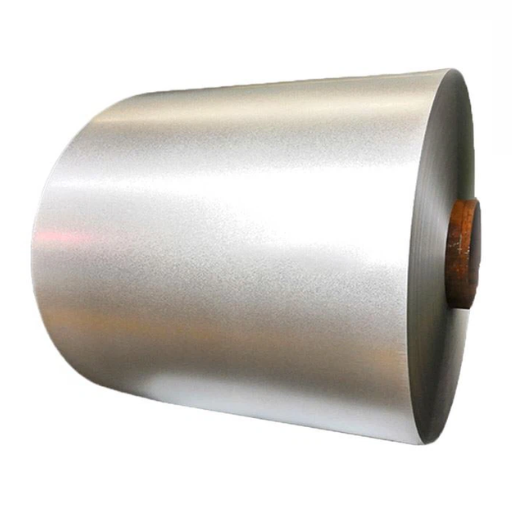
Galvanized coil standards assure quality and reliability, warranty the performance of goods, and provide consistency across applications. The following are the major standards:
- ASTM A653/A653M – Defines requirements for zinc-coated or galvanized steel sheets with respect to composition, thickness of coating, and mechanical properties.
- EN 10346 – Defines the specifications for continuously hot-dip coated steel flat products, including galvanized coating.
- JIS G3302 – Another specification for hot-dip zinc-coated steel sheets often used in construction and automotive sectors.
Depending on industry needs, those standards specify coating thickness, corrosion resistance, and mechanical properties.
Understanding ASTM Specifications
| Key Point | Description |
|---|---|
| Purpose | Ensures material quality and performance. |
| Scope | Defines application and limitations. |
| Classification | Groups materials by properties or use. |
| Test Methods | Specifies procedures for material testing. |
| Terminology | Standardizes definitions and terms. |
| Units | Uses SI or inch-pound units consistently. |
| Certification | Verifies compliance with standards. |
| Rejection and Rehearing | Outlines steps for non-conformance. |
| Referenced Documents | Lists related standards and references. |
| Supplementary Requirements | Includes optional additional criteria. |
Comparison with JIS Standards
When comparing ASTM specifications with JIS standards, one finds that the two frameworks both focus on quality and performance but seem to cater to regional preferences and requirements. ASTM specifications tend to take rather wide-ranging and generic guidelines for quality, allowing flexibility so that anyone using them can fit them to suit their requirements. Conversely, JIS standards tend to be more prescriptive and detailed, particularly in industries where exact uniformity and precision are needed, from automotive to construction. This distinction enables me to choose the standard most suitable, depending on the location and exact need of the project.
The Importance of Zero Spangle Finish
The Zero Spangle finish refers to a uniform, smooth surface achieved during the galvanization of steel sheets. This finish removes the crystallized patterns of traditional galvanized coatings and is equally appreciated for both looks and performance. Industry names automotive, home appliances, and architecture among the discriminating applications for which clean, flawless surfaces are needed: see below the five key points that describe the importance of the Zero Spangle finish:
- Increased Visual Appeal
A smooth and very uniform surface with a zero-spangle finish visually enhances galvanized steel; hence, it is best suited for applications requiring an elite visual character.
- Superior Paint Adhesion
The uniform texture provided by the Zero Spangle finish enhances the adhesion of paints and coatings, reducing the incidence of peeling and flaking over time.
- Greater Corrosion Resistance
Being denser and more uniform in nature, the Zero Spangle finish offers better protection than standard coatings against rust and degradation due to environmental factors.
- For Precision Manufacturing
Lack of surface irregularities means these coatings are compatible with precision manufacturing processes, thereby greatly increasing product consistency and reducing downstream costs.
- Sustainability and Energy Efficiency
The Zero Spangle coatings production process is often more controlled than others, generating less waste and boasting greater energy efficiency, making it a much-preferred option in sustainable manufacturing practices.
Each point substantiates why the Zero Spangle finish is widely acclaimed across many industries. It provides both practical and environmental value.
How to Choose the Right Galvanized Steel Coil for Your Needs?

- Understanding Application
Identify the specific use of the galvanized steel coil, whether it is for construction, automotive, or appliance manufacture. Different applications require different standards of durability, finish, or coating types.
- Assess Coating Requirements
Decide on either a Zero Spangle finish or a Regular Spangle finish based on aesthetics and functionality. Zero Spangle gives a smooth surface that is cool for painting, while Regular Spangle retains the typical look.
- Check Thickness and Dimensions
Check if the coil meets the thickness, width, and weight specifications required for your project’s structural or design needs.
- Evaluate Corrosion Resistance
Choose the product with adequate corrosion resistance for the given environmental exposure, corrosive medium, moisture, or chemicals.
- Consider Supplier Reliability
Source from manufacturers or suppliers reputed for manufacturing the best quality products with excellent customer support.
Focusing on these outlining points will confidently guide you to select galvanized steel coils that are streamlined with your precise requirements, bringing your project to success.
Factors to Consider in Supplier Selection
When selecting a supplier, I emphasize the reputation for quality and reliability. I look at past performance, get customer opinion, and sometimes even use industry certifications to confirm! Then, I look at more important factors like clear communication, reasonable pricing, and punctual deliveries—the ingredients upon which a good partnership can be formed.
Evaluating Galvanized Steel Coil Weight and Dimensions
| Key Point | Description |
|---|---|
| Coil Thickness | Measured in millimeters or inches. |
| Coil Width | Standard widths range from 600mm to 1500mm. |
| Coil Weight | Typically ranges from 3 to 25 metric tons. |
| Inner Diameter (ID) | Commonly 508mm or 610mm. |
| Outer Diameter (OD) | Varies based on coil weight and thickness. |
| Zinc Coating Thickness | Measured in microns or grams per square meter. |
| Steel Grade | Defines strength and application suitability. |
| Surface Finish | Options include matte, glossy, or spangled. |
| Tolerance | Specifies acceptable deviations in dimensions. |
| Packaging | Includes protective wrapping for transport. |
Price Considerations for Galvanized Steel
Galvanized steel prices change according to several factors: general market fluctuations, raw material costs, coating thickness, and transportation fees.
What are the Typical Uses of DX52D Galvanized Steel Coil?
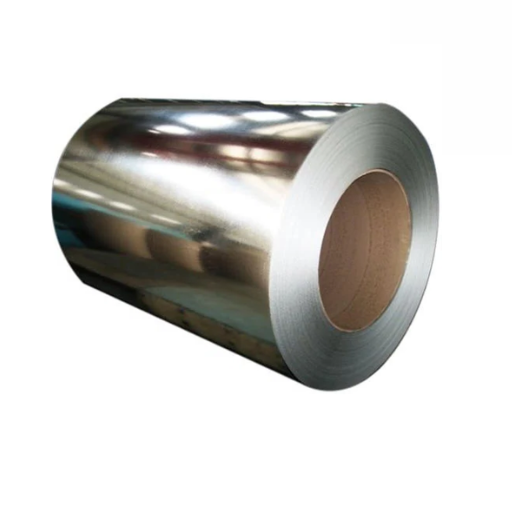
| Industry | Application | Key Features |
|---|---|---|
| Automotive | Roofing, wall panels, and building frames | Corrosion resistance, formability |
| Construction | Stamping, forming, and welding parts | Weather resistance, durability |
| Home Appliances | High-strength, protective coating | Rust resistance, easy processing |
| Electrical Equipment | Enclosures, cabinets | Washing machines, refrigerators, and microwaves |
| Agriculture | Greenhouse frames, machinery parts | Outdoor durability, corrosion resistance |
| Food Processing | Conveyor belts, storage containers | Smooth surface, food-safe coating |
| General Manufacturing | Stamping, forming, welding parts | Versatility, moderate strength |
Use in the Automotive Industry
It is utilized throughout the automotive industry due to corrosion resistance, formability, and durability. This steel product is extensively used in applications on significant vehicle parts, such as car body panels, underbody components, and structural reinforcements. The zinc coating essentially acts as a passive barrier that prolongs the vehicles’ life from the moment they are protected against rust and corrosion due to adverse environmental elements.
The worldwide demand for galvanized steel for automotive applications has been experiencing enormous growth over the years. The increased interest in lightweight and energy-efficient vehicles fuels part of this demand. Alternative studies emphasize that galvanized steel is crucial for reducing vehicular weight without compromising safety, which will go a long way in improving fuel efficiency and lower emissions, which is central to the accelerated sustainability agenda in the industry.
DX52D Galvanized Steel Coil manufacturers hold high weldability in high esteem because it allows the unimpeded production of intricate shapes and components. German, Japanese, and South Korean car manufacturers are now famous for using this grade in the manufacture of luxury and high-performance vehicles, confirming the usefulness and flexibility of this steel. Additionally, the price of DX52D Galvanized Steel Coil is much lower than aluminum, making it the popular choice for mass vehicles.
All these retinal properties of DX52D Galvanized Steel Coil strategize the fundamental development of both performance and longer-lasting working.
Applications in Roof Construction
DX52D galvanized steel coil finds its applications in roof construction, offering toughness, weather resistance, and affordability. The galvanized coating protects the steel against corrosion for a prolonged period, thus making it suitable as a roofing material in environments that pose any challenge. This grade also offers the advantage of being light and very easy to work with, thus reducing installation time and labor costs. The five specific uses of steel in roof construction include:
- Metal Roofing Panels provide strong, weather-resistant covering for residential, commercial, and industrial buildings. The corrosion-resistant surface of the steel increases the lifespan of a roof.
- Roof Flashings – Installed to seal the edges and joints of roofing systems to stop water ingress. Its flexibility will enable tight and effective sealing.
- Corrugated Roofing Sheets – For agricultural and industrial structures, providing the high strength-to-weight ratio and high durability even under heavy loads.
- Roof Trusses and Frames provide a strong and reliable framework for running roof structures, maintaining stability against stress.
- Gutters and Downspouts – Produced to channel rainwater away from roof surfaces, preventing leaks and water damage while resisting rust and wear through time.
These uses exhibit the versatility of this material and further reveal its significance in making sturdy, long-lasting roofing solutions.
Other Industrial Steel Products
Some consider the myriad applications and the strengths of these steels. Steel is used for construction, manufacturing, and infrastructure development of pipes, beams, and sheets. With all the possible demanding applications, it should be tough, flexible, dependable, and long-lasting in industries.
References
- Academia.edu: SHEET METAL DUCTWORK DW144 – This document discusses specifications for sheet metal ductwork, which may include relevant details about galvanized materials.
- PubMed Central (PMC): Analysis of the Innovative Channel Strut Concept – This article explores cold-formed metal components, which could provide insights into the properties and applications of galvanized steel.
- SSAB Official Website: Metal coated formable steels, EN10346:2015 – This page provides technical details about DX52D and other metal-coated steels, including specifications and applications.
Frequently Asked Questions (FAQ)
Q: What is DX52D Galvanized Steel Coil?
A: DX52D galvanized steel coil is a type of hot-dipped galvanized steel known for its excellent corrosion resistance and durability. It is often used in various applications, such as construction, automotive, and home appliances.
Q: How does DX52D differ from DX51D galvanized steel?
A: While both DX52D and DX51D are types of galvanized steel sheet, DX52D offers enhanced formability and is typically used for more demanding applications. DX51D is more common for general purposes where extreme forming is not required.
Q: What is the significance of the ASTM A653 standard in galvanized steel?
A: The ASTM A653 standard specifies the requirements for hot-dipped galvanized steel, including the thickness of the zinc coating, which directly impacts the corrosion resistance and overall quality of galvanized properties of the steel.
Q: What are the typical applications of DX52D hot-dipped galvanized steel coil?
A: DX52D hot-dipped galvanized steel coil is commonly used in the manufacturing of automotive parts, construction materials, home appliances, and various other steel products requiring high corrosion resistance and durability.
Q: Can DX52D galvanized steel coil be painted or coated?
A: Yes, DX52D galvanized steel coil can be further processed into prepainted galvanized steel (PPGI), coated with a layer of paint for additional protection and aesthetic purposes.
Q: How does the thickness of zinc coating affect the service life of galvanized steel?
A: The thickness of the zinc coating on galvanized steel, such as in DX52D, directly correlates with its service life. A thicker layer of zinc provides better protection against corrosion, thus extending the steel’s lifespan.
Q: What are GI coils, and how do they relate to DX52D galvanized steel?
A: GI coils refer to galvanized iron coils, often used interchangeably with galvanized steel coils. DX52D is a specific grade of GI coil known for its enhanced mechanical properties and corrosion resistance.
Q: Is DX52D galvanized steel coil suitable for outdoor applications?
A: Yes, DX52D galvanized steel coil is suitable for outdoor applications due to its excellent corrosion resistance. This makes it ideal for environments exposed to moisture and other corrosive elements.
Q: What are the advantages of using DX52D over stainless steel?
A: DX52D offers superior formability and is more cost-effective than stainless steel while still providing good corrosion resistance. It is often chosen for applications where these factors are more critical than stainless steel’s high corrosion resistance.


